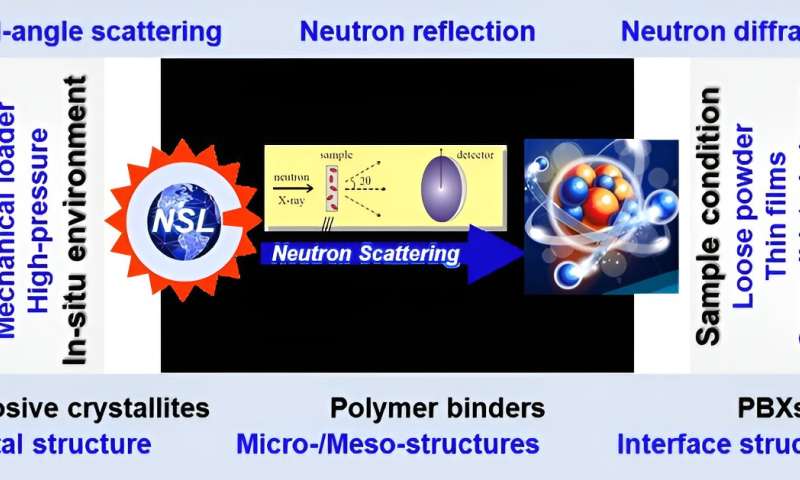A review of techniques for microstructural characterization of polymer-bonded explosives

Complex fabrication procedures and heterogeneous components contribute to the varied microstructures of PBX materials, including voids or pores, cracks, material interfaces, and micro-strains. Extensive experimental studies have revealed that the multi-scale microstructures of PBXs can affect their macroscopic properties.
Therefore, qualifying the microstructural features of PBXs is essential for establishing the quantitative relationship between their structures and properties.
In studying the structure-activity relationship and the overall performance of polymer-bonded explosives (PBXs), neutron and X-ray scattering techniques have been identified as unique and useful methods for quantifying the inherent hierarchical microstructures and components of PBXs.
In a recent review published in the journal Energetic Materials Frontiers, a group of researchers from China focused on a series of scattering techniques and their typical applications in PBXs and introduced large neutron and X-ray scientific facilities in China.
They summarized some typical applications to promote research on PBXs using scattering techniques. The following parts were introduced:
(1) a brief introduction of available large neutron and X-ray scientific facilities in China;
(2) an overview of the principles of SAS, NR, and ND for characterizing PBXs, including the description of the experimental process, apparatuses used to control the in-situ environment conditions, and some typical sample conditions and fitting models for PBXs;
(3) an overview of the typical applications of SAS, NR, and ND for characterizing PBXs,
(4) and a discussion of the complementary methods and prospect of some promising subjects for the development and application of scattering techniques.
Scattering techniques have been widely used to characterize various PBX materials. According to the authors, several key observations can be drawn:
(1) the scattering techniques based on large scientific facilities can yield quantified parameters related to the microstructural features of PBX materials;
(2) these techniques can easily integrate with various environmental instruments, making them convenient for in-situ experiments involving temperature cycling, mechanical loading, solution, and other atmosphere-filling conditions;
(3) efforts have been directed toward the application of new negative thermal expansion functional materials, and attempts have been made to correlate microstructural parameters obtained through scattering with various performance or property metrics; and
(4) with the rapid expansion of available scattering techniques for PBX materials based on large scientific facilities, the energetic material community is presented with increased opportunities.
More information:
Liang-fei Bai et al, A review of small angle scattering, neutron reflection, and neutron diffraction techniques for microstructural characterization of polymer-bonded explosives, Energetic Materials Frontiers (2023). DOI: 10.1016/j.enmf.2023.01.001
Provided by KeAi Communications Co.